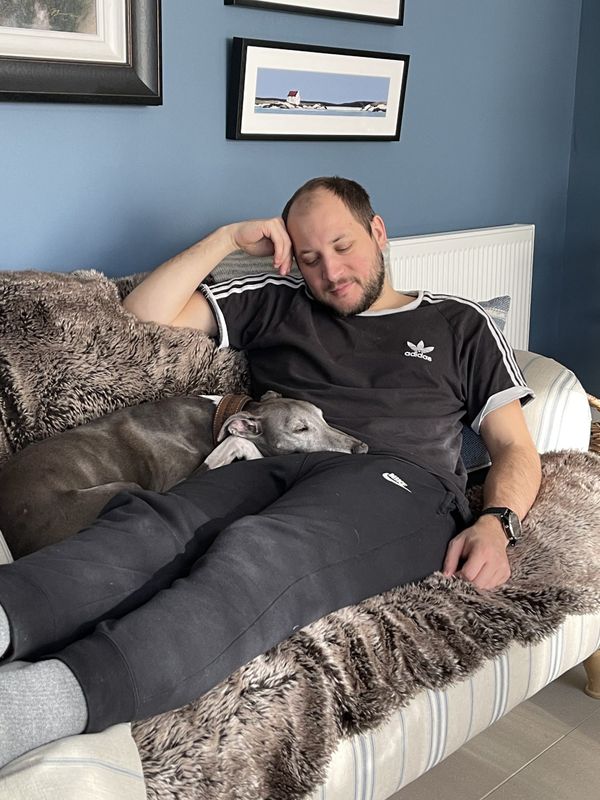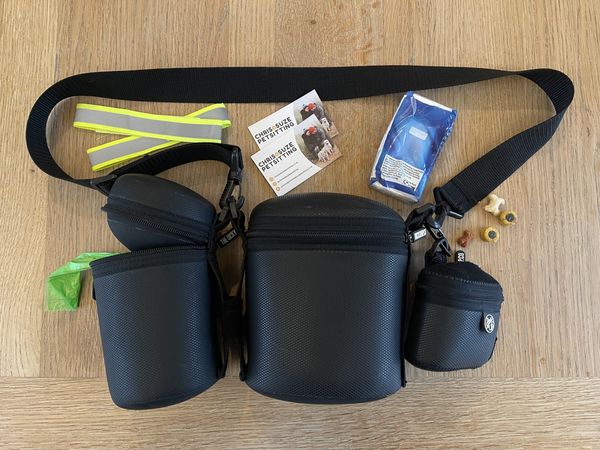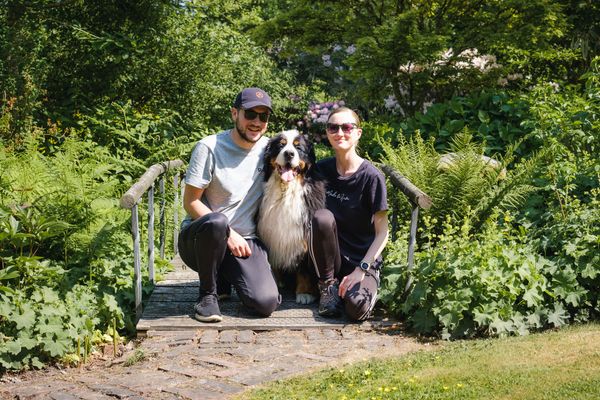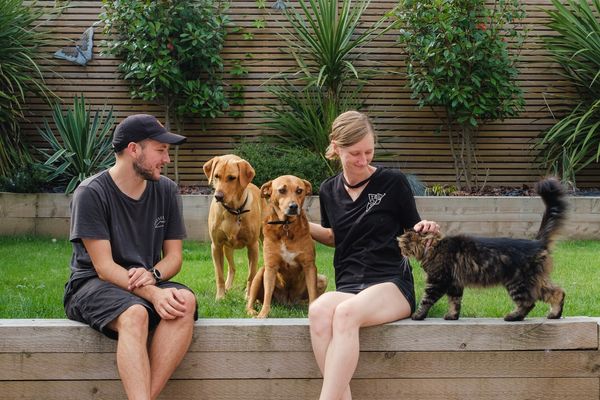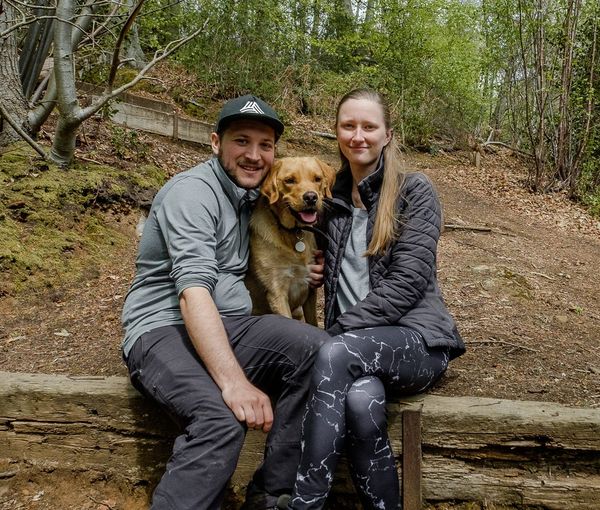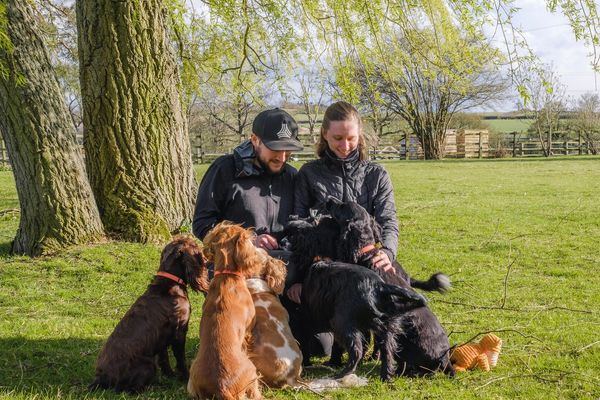We’re now in our eighth year of working as full time pet sitters, and have completed over 150 house sits to date. It’s never lost on us how personal our job is, and it always makes for a wonderful experience all round when we’re welcomed into our clients homes, knowing that they’ve placed a lot of trust in us but also want to ensure we have a positive experience. After all, the more comfortable we feel carrying out our duties, the more the experience is a smooth-running one for everyone. Here we’re sharing a few different ways that you can ensure your live-in pet sitter feels welcome and comfortable in your home, so they’ll feel happy to come back time and time again!
Table of Contents
Write a house guide
This is number one on our list because it’s something that we feel every owner should provide for their sitter. Early in our pet sitting journey we arrived to countless houses where the owners hadn’t written down a single line of information for us, and instead verbally told us important information about their home and pets’ routine in immense, rapid-fire detail. Cue us hastily typing lots of notes in our phones as we tried to retain as much information as we could, without misinterpreting important details about dog feeding routines or alarm codes! We had a few too many surprises at our early pet sits when owners failed to mention house quirks, or had forgotten to provide us with gate codes and security system details, that over the years we’ve learnt which questions we need to ask at every house sit.
We now provide owners with our own question sheet for them to fill in all the information we’ll need while pet sitting at their home, from WiFi codes and emergency contact numbers, to where dog poo bags are kept and the quantity of food pets are given. It’s in your best interest to make sure that a sitter has specific information about your pets’ routines and how things work in your house – after all, you don’t want to keep being disturbed while you’re away with questions about where dogs sleep or where treats are kept. Even a few main points will help your sitter to have a smooth stay, so you can relax in the knowledge that everything is being taken care of at home as if you’d never left.
If you need some inspiration for writing your house guide notes, read our post about recommended questions pet sitters should ask.
Provide pet supplies to last the sit duration
This one is another non-negotiable element to preparing your home for your pet sitter to do their job. It’s incredibly stressful as pet sitters when owners let pet food run out during our stay, or worse, pet medication. It should never be the pet sitter’s responsibility to buy food for your pets, or any other items that are integral for the job such as dog poo bags. We’re not always able to reach owners straightaway while they’re enjoying their holidays, and the stress shouldn’t be put on the sitter to go out and find the exact items that have run out.
Help you and your sitter have a stress-free experience by preparing everything your pets need before you go away. This includes ordering pet food to last the duration of the sit, stocking up on enough medication (and giving instructions on administering it) if your pets will need this while you’re away, providing items like wood shavings and sprays for cleaning out small animal cages or clearing up puppy accidents, and ensuring all leads, harnesses, and any other pet equipment is ready for use.
Tidy communal spaces
This should go without saying, but in order to ensure your sitter can comfortably carry out their duties in your home it’s important to prepare living spaces for their arrival. This includes cleaning cooking areas, tidying documents off of dining tables so there’s somewhere to eat meals, and preparing bedding in the bedroom that your sitter will be staying in. Speaking from experience, it’s incredibly uncomfortable for a sitter to have to clean or tidy a home before settling in, especially if personal documents are strewn on tables that we need to access, or bathrooms haven’t been freshened up for our arrival.
If your sitter will be staying in a guest bedroom that rarely gets used, it can go a long way in terms of your sitter’s happiness and comfort if you spend some time preparing the room for their stay. Switching on the radiator if it’s been left off, making the bed with fresh sheets, and dusting any side tables lets the sitter know that you’ve put thought into their comfort while in your home. It’s easier to settle into an unfamiliar house if the host has put effort into ensuring you feel at home. Consider clearing out a drawer or two if there is one, or providing the sitter with empty hangers for hanging up their clothes – especially if they’ll be staying for more than a few days.
It’s sad for us to admit that we’ve turned down requests to return to house sits where the pets were adorable and the location was idyllic, just because the owner had left their house in a state we didn’t feel comfortable living in. One of our worst experiences was a house with food debris strewn throughout the kitchen, dirty carpets, and having to step around house items that hadn’t been tidied away – all because their cleaner hadn’t turned up the day before our arrival, and the home owner hadn’t thought to prepare the house themselves in any way. Showing that you care about the pet sitter’s experience, even with the briefest of tidy up sessions, goes a long way to showing your sitter you’ve thought about their comfort.
Provide house keys
The majority of the time we find ourselves pet sitting for couples or families, where one member of the household can provide us with their set of keys for our stay. On other occasions we sit for single owners who have to dig out their spare set for us to ensure they’ll have a key for their return home, if we’re not having a handover on the final day of the sit. Make sure you’re prepared for your sitters with a set of house keys – especially if you’ll have a brief handover or not see them at all before you leave for your trip. This includes any back door keys, or keys for sheds and out buildings if your sitter will need to access them during their stay. We’ve only had to chase one or two owners down their driveway as they’re leaving their home, having forgotten to give us house keys, but luckily we’ve caught up with them in time!
Map out your dog’s walkies
Countless times we’ve listened to dog owners trying to explain their familiar routes for walking dogs, while we try to decipher lefts, rights, turns down lanes and local points of interest, having never set foot in the area before. We have an OS Maps subscription to help us plot out routes on the app when owners have given us written instructions, however it’s always more useful when dog owners provide us with maps for their usual routes. If you don’t want to print out pages and pages of Google Map screenshots (though this is always helpful!) even the most basic line drawing of your routes will help your sitter find their way and make sure they don’t get lost out on walkies with your dogs! Oftentimes dogs who are set in their routines will show us the way but this isn’t always the case, especially if there are multiple junctions en route or different pathways to take.
Tell your neighbours
This one isn’t always necessary, especially if you live in a remote location or have never spoken to your immediate neighbours, but it can help the smooth-running of a house sit. Previously we’ve been given names and contact numbers of neighbours while pet sitting so that we can call on them for assistance in case of an emergency, which helps to reassure us that we’ll be able to get help if we can’t reach the home owners. Other times, having the home owner let their neighbours know they’re having sitters to stay ensures the neighbours aren’t surprised or suspicious when our van parks up on the driveway! It’s something that often gets overlooked, but serves as a little extra reassurance for all parties.
Little things that go a long way
A few small things you can do to make your sitter feel welcome, to ensure they’ll be happy to return for every trip you take!
- A welcome note. If you won’t see your sitter to handover before you go away, consider writing a small note to welcome them to your home, or to say thank you for sitting for you. It’s a little thoughtful touch that helps the sitter feel appreciated.
- Small food items. Something that is never a requirement but is a nice touch, is thinking to leave a pint of milk in the fridge or a loaf of bread for your sitter. We’re fortunate to travel in our campervan that has a fridge inside, so we can bring food items with us. But for solo sitters or those travelling without a car, providing a couple of cupboard staples lets the sitters know you’ve thought of their needs on arrival day. On many occasions we’ve been surprised with bottles of wine, chocolates or homemade cakes, but these are absolutely not expected – though these treats are always very much appreciated!
- Local recommendations. If you highly rate your local takeaway or there’s a beautiful National Trust place close to your house, writing a list of local recommendations for your sitter will help them feel more at home, especially if they haven’t visited your area before.
- Check in with your sitter. This is especially appreciated if it’s the first time your sitter has stayed in your home. Sending a message to ask how things are going, or make sure they’re settling in well, is a thoughtful gesture to show you care about them having a positive experience. It also reinforces for us that we’ll be able to easily contact the owner if we have any questions while at the sit.
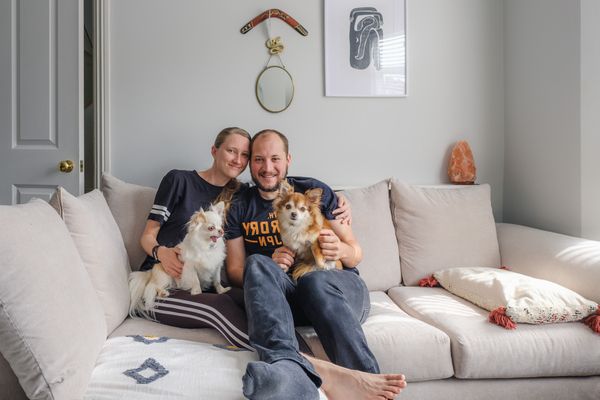
We are Chris+Suze
Latest Posts


